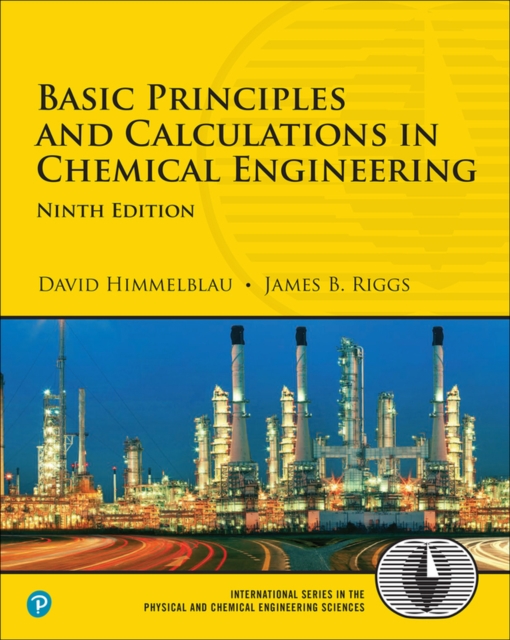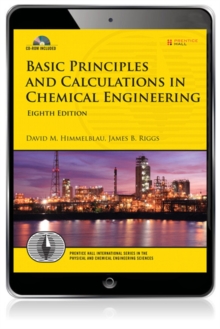
Basic Principles and Calculations in Chemical Engineering EPUB
by David M. Himmelblau, James B. Riggs
Part of the International Series in the Physical and Chemical Engineering Sciences series
EPUB
Description
The #1 Guide to Chemical Engineering Principles, Techniques, Calculations, and Applications--Revised, Streamlined, and Modernized with New Examples
Basic Principles and Calculations in Chemical Engineering, Ninth Edition, has been thoroughly revised, streamlined, and updated to reflect sweeping changes in the chemical engineering field. This introductory guide addresses the full scope of contemporary chemical, petroleum, and environmental engineering applications and contains extensive new coverage and examples related to biotech, nanotech, green/environmental engineering, and process safety, with many new MATLAB and Python problems throughout.
Authors David M. Himmelblau and James B. Riggs offer a strong foundation of skills and knowledge for successful study and practice, guiding students through formulating and solving material and energy balance problems, as well as describing gases, liquids, and vapors. Throughout, they introduce efficient, consistent, learner-friendly ways to solve problems, analyze data, and gain a conceptual, application-based understanding of modern processes.
This edition condenses coverage from previous editions to serve today's students and faculty more efficiently. In two entirely new chapters, the authors provide a comprehensive introduction to dynamic material and energy balances, as well as psychrometric charts.
- Modular chapters designed to support introductory courses of any length
- Introductions to unit conversions, basis selection, and process measurements
- Strategies for solving diverse material and energy balance problems, including material balances with chemical reaction and for multi-unit processes, and energy balances with reaction
- Clear introductions to key concepts ranging from stoichiometry to enthalpy
- Coverage of ideal/real gases, multi-phase equilibria, unsteady-state material, humidity (psychrometric) charts, and more
- Self-assessment questions to help readers identify areas they don't fully understand
- Thought, discussion, and homework problems in every chapter
- New biotech, bioengineering, nanotechnology, green/environmental engineering, and process safety coverage
- Relevant new MATLAB and Python homework problems and projects
- Extensive tables, charts, and glossaries in each chapter
- Reference appendices presenting atomic weights and numbers, Pitzer Z^0/Z^1 factors, heats of formation and combustion, and more
Supplemental Online Content (available with book registration):
- Three additional chapters on Heats of Solution and Mixing, Liquids and Gases in Equilibrium with Solids, and Solving Material and Energy Balances with Process Simulators (Flowsheeting Codes)
- Nine additional appendices: Physical Properties of Various Organic and Inorganic Substances, Heat Capacity Equations, Vapor Pressures, Heats of Solution and Dilution, Enthalpy-Concentration Data, Thermodynamic Charts, Physical Properties of Petroleum Fractions, Solution of Sets of Equations, Fitting Functions to Data
Information
-
Download - Immediately Available
- Format:EPUB
- Pages:896 pages
- Publisher:Pearson Education
- Publication Date:27/07/2022
- Category:
- ISBN:9780137327232
Other Formats
- EPUB from £73.65
- PDF from £34.19
Information
-
Download - Immediately Available
- Format:EPUB
- Pages:896 pages
- Publisher:Pearson Education
- Publication Date:27/07/2022
- Category:
- ISBN:9780137327232










